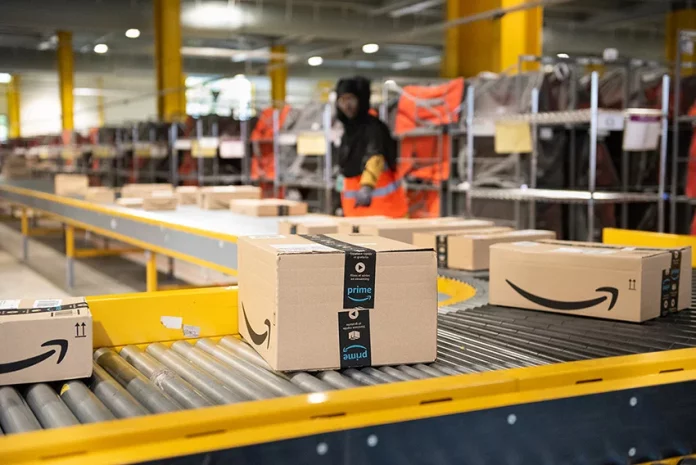- Amazon is asking some retail vendors for lump sums of cash to make up for lower profit margins.
- The company has also instituted inventory and restock limits on third-party sellers.
- Some sellers are angry. One said Amazon “punishes everyone else” for its mistakes.
Amazon’s retail business is squeezing its selling partners by deploying a slew of tactics to save money ahead of what the company forecasts to be a weak holiday sales season that kicks off Black Friday.
Amazon is asking vendors for additional direct payments to make up for lower profit margins, according to two people with knowledge of the negotiations. It also has told sellers it will no longer reimburse them for the full price of items that Amazon damages in storage or transit, according to a message to sellers seen by Insider.
At the same time, it has imposed inventory limits on third-party sellers to the point that some sellers say they may not have enough product in stock to run holiday promotions, according to interviews with four such sellers, who asked not be named in order to discuss the situation without fear of jeopardizing their business relationship with Amazon. Their identities are known to Insider.
All told, the moves have reinforced a perception among some of the company’s selling partners that Amazon “punishes everyone else” for its own mistakes, one third-party seller said.
An Amazon representative said the changes had the potential to “positively impact our customers.”
“We have faced and overcome many challenges side by side with our selling partners the last few years including supply-chain disruptions, inflationary environments, and dynamic costs and have worked collaboratively to find mutually beneficial outcomes,” the person said.
Amazon’s share price has taken a beating since it announced weaker-than-expected fourth-quarter sales forecasts, which includes peak shopping times like Black Friday, Cyber Monday, and the Christmas season. Last week, Amazon became the first publicly traded company to lose $1 trillion in market value.
Amazon has been on a cost-cutting spree and started laying off employees on November 15, Insider first reported. It is expected to lay off approximately 10,000 corporate employees, The New York Times reported, largely from its Alexa, retail, and human-resources divisions. It has also been slashing underperforming divisions and freezing headcount.
This year, Amazon took the rare step of opening cost-structure negotiations with vendors ahead of the holiday sales season. The company typically renegotiates the terms of its deals with vendors in January, according to two people with knowledge of the negotiations.
Amazon is “looking to recover losses” because of the “degradation” of its profit margin in 2022, the company wrote in letters to some vendors asking them to pay Amazon the shortfall between last year’s profit margins and this year’s. Insider obtained a version of one such letter.
It’s not uncommon for retail platforms like Amazon to ask vendors to pay these margins. But it is “highly out of character” for Amazon to attempt to renegotiate those terms so late in the year, one person with knowledge of the negotiations said. Amazon’s representative disputed that it’s uncommon for negotiations to happen at this time of year.
Amazon is calling the negotiations “Joint Business Proposals,” this person added, though their impression was that there was nothing “joint” about Amazon’s demand for cash.
Amazon’s third-party sellers, meanwhile, began encountering strict inventory and restock restrictions several weeks ago, limiting how much product they could keep in Amazon warehouses and the extent to which they could replenish it as it sells out.
Amazon’s representative said the new restock limits were intended “to ensure a successful holiday season.” The limits should allow sellers to have at least three months of inventory available to be fulfilled by Amazon, the person said. “Restock limits are designed to create more capacity for sellers who are using space efficiently,” the person added.
Amazon has previously implemented inventory restrictions in advance of the holidays, but sellers say this year’s are particularly unexpected in light of the company’s warehouse overexpansion.
“Nobody saw it coming,” one Amazon seller said. “Everyone was expecting them to have tons of space and the supply-chain issues to be solved.”
Another seller said he estimated that in two weeks he wouldn’t have any more inventory left in Amazon warehouses because of Amazon’s inventory and restock limits. That could make it difficult for sellers to run holiday promotions, including during Black Friday and Cyber Monday.
The company has also revised its reimbursement policy for items that are damaged while they’re being stored in Amazon’s warehouses or delivered to customers by Amazon’s delivery network. Previously, Amazon had reimbursed sellers for damaged items at the sale price. Last week, Amazon told sellers it would begin reimbursing them for such items at “a discounted rate to reflect the actual fair market value of the item,” according to an email to sellers obtained by Insider. The letter didn’t clarify how Amazon would calculate items’ market value.
“Amazon pitches themselves as a trusted partner, yet these out-of-the-blue changes happen on a regular basis with zero input from third-party sellers, the very backbone of Amazon,” said Jon Elder, the CEO of Black Label Advisor, a consultancy for Amazon sellers.
Amazon sellers have said they are feeling increasingly squeezed by the e-commerce giant’s fee structures. Earlier this year, Amazon added a 5% inflation and fuel surcharge to the listing fee it charges sellers using its fulfillment services. Amazon’s cut of sellers’ revenue has increased nearly 50% since 2014, according to the antimonopoly think tank the Institute for Local Self-Reliance, and it amounted to 34% last year.

